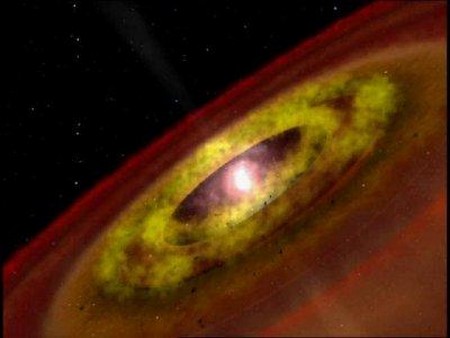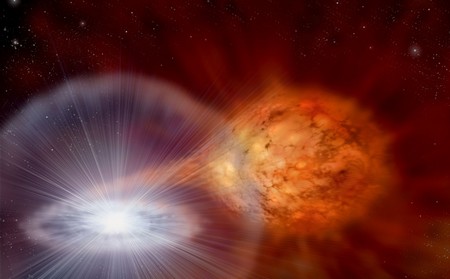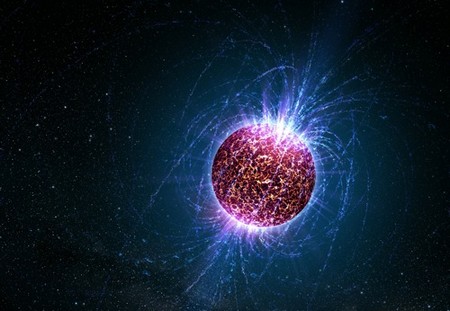A star is defined as a large ball of burning gas in space that we see as a tiny point of light in the sky at nighttime on the earth. There are numerous numbers of stars in the space which are classified into different types by astronomers. A star may range from a tiny brown dwarf to the supergiant. However, there are several other unusual types of stars found in the space like neutron stars and Wolf-Rayet stars.
What most of the people believe is that stars are the celestial bodies which are fixed and static. However, the great works of astronomers’ show that stars are intended to form, evolve and in the end exhaust their energy resources to become stellar remnant. Stars are actually characterized in terms of life cycle of stars and stellar evolution, though these are not living bodies.
Following are given some of the different types of stars with their brief description in terms of their energy resources:
Protostar
A potostar is in fact a state prior to the formation of a star. A protostar is basically a group of gases that breakdown from a giant molecular cloud. In the stellar development, this protostar phase persists for over 100,000 years. With the passage of time, both the gravity and the pressure build up, compelling the protostar to breakdown or crash down. Gravitational energy is the sole contributor of heat generated in the protostar. At this stage, nuclear fusion reactions are not operational.
T Tauri Star
The phase before the main sequence star is known as T Tuari start. This stage of star formation and evolution lasts for about 100 million years. This stage arises when the protostar phase ends. Research shows that T Tauri stars don’t possess ample energy, pressure and temperature to initiate the nuclear fusion reactions. These stars normally possess large areas of sunspot coverage, intense X-ray flares and highly influential stellar winds. At this stage, these stars are similar to main sequence stars. Although, the amount of temperature is almost the same as that of main sequence stars, these are huge and brighter as well.
Main Sequence Star
Main sequence star accounts for most of the stars in our galaxy or even in universe. The most obvious example of such star is Sun. The other examples of main sequence stars are Sirius and Alpha Centauri A. Main sequence stars can be of varied size, mass and brightness, but all are performing the same function irrespective of their sizes, masses and brightness, i.e. transforming hydrogen into helium in their cores and le go huge amount of energy.
It is believed that a main sequence star is in a hydrostatic equilibrium position, i.e. the gravitational force drag the star inward while the pressure build up in response to fusion reactions push the star outward. These inward and outward forces balances the effect of each other and the star rests in a hydrostatic equilibrium. These forces help the star to keep its spherical shape intact.
The minimum mass limit of a main sequence stars is 0.08 times the mass of the Sun and 80 times the mass of the Jupiter. This is considered as the minimum amount of gravitational pressure that is essential to initiate the fusion process in the core of the star. Astronomers believe that main sequence star can grow over 100 times the mass of the Sun.
Red Giant Star
Once the stock of hydrogen is used up by the star the fusion reaction halts and the ability to generate an outward pressure weakens as a result of which the star is unable to keep the balance with the inward pressure. However, the crust of hydrogen surrounding the core continues to ignite the life in the star, but in the mean time also results in the drastic change of size. This growing star now takes the form of red giant star which is 100 times bigger than the size of the original main sequence star. After consumption of this hydrogen layer, helium and other elements take part in the ignition of fusion. When no more elements left in its core to initiate the fusion reactions, the red giant star transform into white dwarf star.
White Dwarf Star
Once the all the hydrogen, helium and other elements are eaten up, the red giant star takes the form of white dwarf star because of lessened mass limit. By this time, the fusion reactions completely stopped and the star breaks down inward against its own gravitational force. Although, there are no fusion reactions taking place on the star, it still shines. From now onwards, the white dwarf star begins to cool down and it takes it hundreds of billions years before it cools down. These numbers suggest that there is no white dwarf which is yet cooled down.
Red Dwarf Star
One of the most common types of stars in the universe is red dwarf star. Red dwarf stars are in fact main sequence stars but with relatively smaller in size (low mass) and much cooler as well. The best feature of these stars is their ability to preserve the hydrogen fuel for a longer period of time in their cores. Astronomers are of the view that there are red dwarf stars which can live up to 10 trillion years. According to the reports, the smallest red dwarf stars have 0.075 times the mass of the Sun, i.e. mass half of the mass of the Sun.
Neutron Stars
Astronomers are of the view that when a star is 1.35 and 2.1 times the mass of the Sun, it doesn’t turn into a white dwarf star rather a disastrous supernova explosion results in its destruction. The leftover mass becomes the neutron star. This star is made up of only neutrons and nothing else. Neutron stars come into existence because of the powerful gravity that smashes the protons and electrons to develop neutron. If the mass of the stars are even larger, they transform into black holes rather than becoming neutron stars.
Supergiant Stars
Supergiant stars are known to be the largest stars in the universe. These are gigantic with loads of mass, to say, about dozens of times the mass of the Sun. The Sun is assumed to be a very strong and firm that follows a significant process of hydrogen consumption. While supergiant stats are known to eat up their hydrogen fuel quite quickly and consumed up all of their fuel within few million years. Therefore, it is said that supergiant stars live a busy life and die young.
It often happens that the star has a large mass which even after the consumption of all the hydrogen fuel and other elements the mass leftover surpasses the limit that even neutron decadence couldn’t resist. Hence, the leftover material keeps creaking down inward and eventually gives rise to a black hole.
In black holes, all the mass gathers together at one place which results in massive gravitational force. These are given the name of black holes because even light cannot escape from them when they crossed event horizon. Event horizon is a place where escape velocity becomes equal to speed of light. Astronomers say that black holes are the bodies which cannot discharge light at any waveband and for this very fact they are hard to notice.







